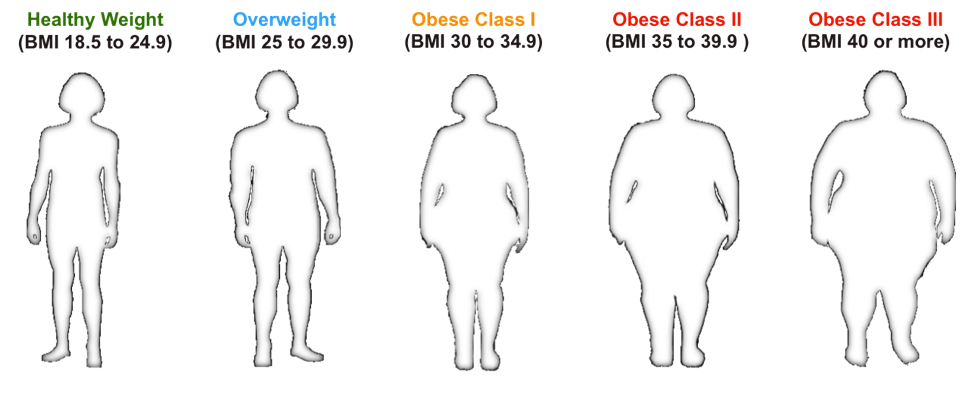Obesity: Who is Affected?
Who is Affected?
While rates of obesity are rising across all demographics, certain demographic groups are more affected than others.

| Obese Class 1 (BMI 30 – <35) | Obese Class 2 (BMI 35 – <40) | Obese Class 3 (BMI 40+) | |
|---|---|---|---|
| Source:Gallup | |||
| All Adults | 16.9% | 6.0% | 3.5% |
| Black | 20.8% | 8.8% | 6.0% |
| Hispanic | 17.9% | 6.3% | 3.4% |
| White | 16.4% | 5.6% | 3.1% |
| Asian | 7.6% | 2.1% | 1.0% |
| Obese Class 1 (BMI 30 – <35) | Obese Class 2 (BMI 35 – <40) | Obese Class 3 (BMI 40+) | |
|---|---|---|---|
| Source:Gallup | |||
| Men | 18.8% | 6.0% | 2.9% |
| Women | 15.0% | 5.9% | 4.0% |
| Obese Class 1 (BMI 30 – <35) | Obese Class 2 (BMI 35 – <40) | Obese Class 3 (BMI 40+) | |
|---|---|---|---|
| Source:Gallup | |||
| <$36k | 18.0% | 7.4% | 5.2% |
| $36k to <$90k | 17.5% | 5.9% | 2.9% |
| $90k+ | 15.2% | 4.2% | 1.8% |
Featured Online Programs
The greatest disparity is racial, with Asian adults far less likely to be obese, and black and hispanic adults slightly heavier on average than white adults. Reasons behind these disparities are subject to debate and often controversial, but diet, exercise, and environment likely play a role, as evidenced by disparities in habits like fast food consumption. One CDC report shows African Americans consume up to 33% more fast food than caucasians.
In general, however, the poor are more likely to be overweight or obese than the rich. Again, nobody is certain why, but studies suggest lower-income individuals consume higher amounts of calories through fast foods and sodas that are high in sugar, fat, and calories. Quite simply, in the United States today, eating healthy food can cost more than eating junk.
Other demographic research has focused on actual access to healthy food, most notably, the “food desert” hypothesis, which suggests poor, urban areas don’t have enough nearby restaurants and grocery stores that sell healthy food. The theory is popular, but there is some skepticism surrounding it. Recent research found no correlation between the type of food sold in neighborhoods and obesity rates.
As of now, the forces driving higher obesity rates in certain demographics aren’t fully understood. It’s easy to say that weight control is a choice, but it’s also a choice that’s easier to make when you have the time and money to make it. One the community level, the obesity problem is a complex function of a community’s level of access to affordable, nutritious food, healthcare and healthcare education, and recreational and fitness facilities.
